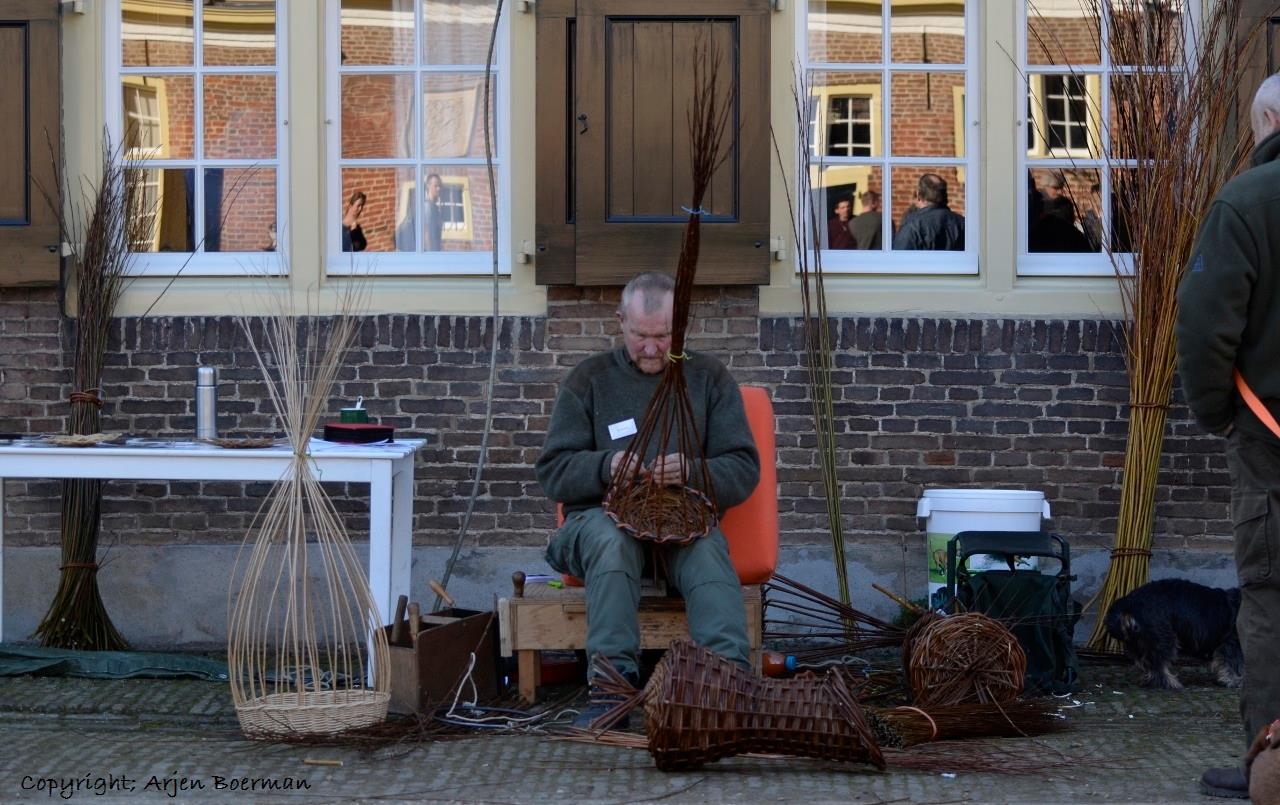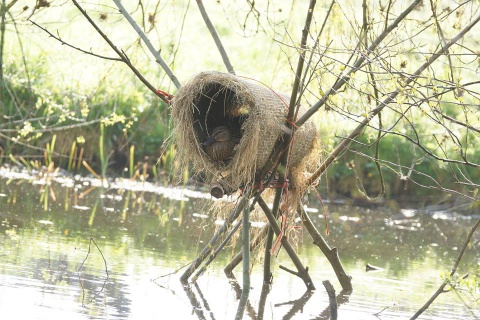
07 Mar 2018 PROJECT OF THE MONTH MARCH 2018 – NESTING BASKETS FOR DUCKS IN THE NETHERLANDS
The project of the month for March celebrates the ancient old tradition of creating nesting baskets for ducks. The Biodiversity Manifesto (BDM) presents multiple projects in the Netherlands (Nuenen and Delfland) where hunters create and place the nesting baskets. The baskets are ideal for duck species like the mallard (Anas platyrhynchos), but also for other types of birds like the Common moorhen (Gallinula chloropus) and even Little owls (Athene noctua) are reported to use the nesting spots.
Nesting baskets
There are multiple reasons to make and place the nesting baskets. First, they are very useful for creating nesting possibilities, especially in the late winter/early spring when nature does not offer lots of cover for ducks to nest in. Secondly, the baskets are usually placed over water, which reduces the effect of predation of land-based predators. Birds, like crows, are also less likely to enter the nest and predate the eggs. Lastly, the baskets can also be a nice addition to the landscape.

There are roughly two types of nesting baskets. Traditionally the baskets are woven with willows in a specific form, to create an ideal nesting spot for the birds. You can either buy them, or with some practice make them yourselves. In America, the UK and in Canada there is also a modern (and easier to produce) version which is made with mesh wire and hay, creating a big roll in which the bird can nest. With a breeding success of 80%, they rightly deserve the name ‘Mallard factories’.
Results
It is important to correctly install the nesting baskets, taking into consideration wind directions, regular spots for crows or other predating birds, water level and general good habitat for ducks. It is important to install the nesting baskets in advance, so the ducks can get used to the baskets in their habitat. It should be noted that ducks can be reluctant to use the baskets in the first year, but that should not encourage anyone, persistence will pay off.
Contact and Sources:
Roderick Enzerink – FACE Wildlife Policy Officer
Pictures:
Erik van Til and Arjen Boerman.

